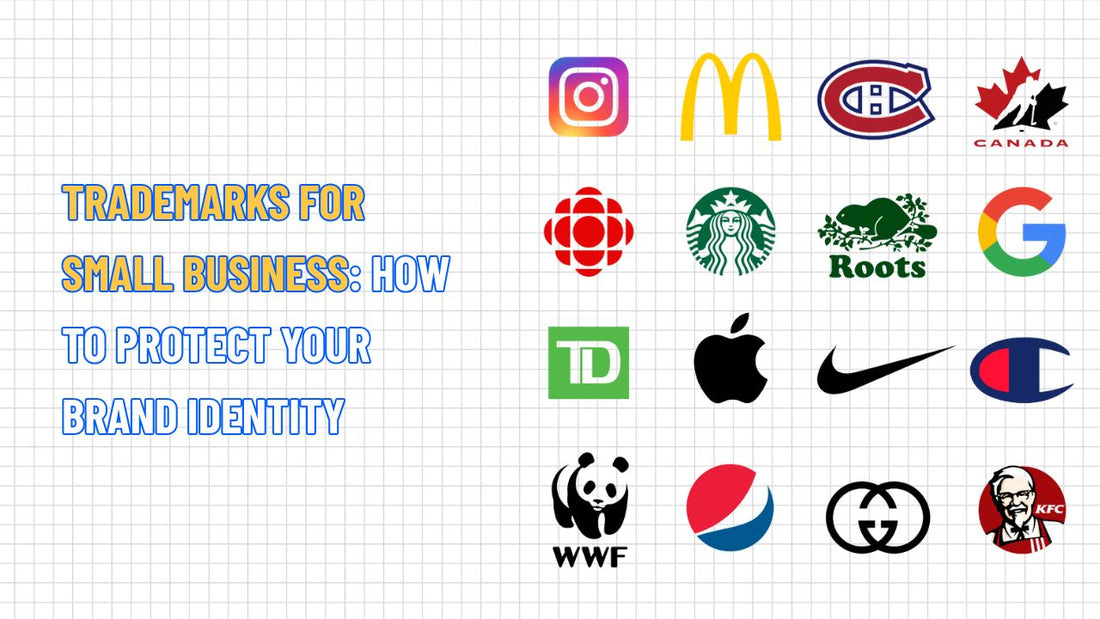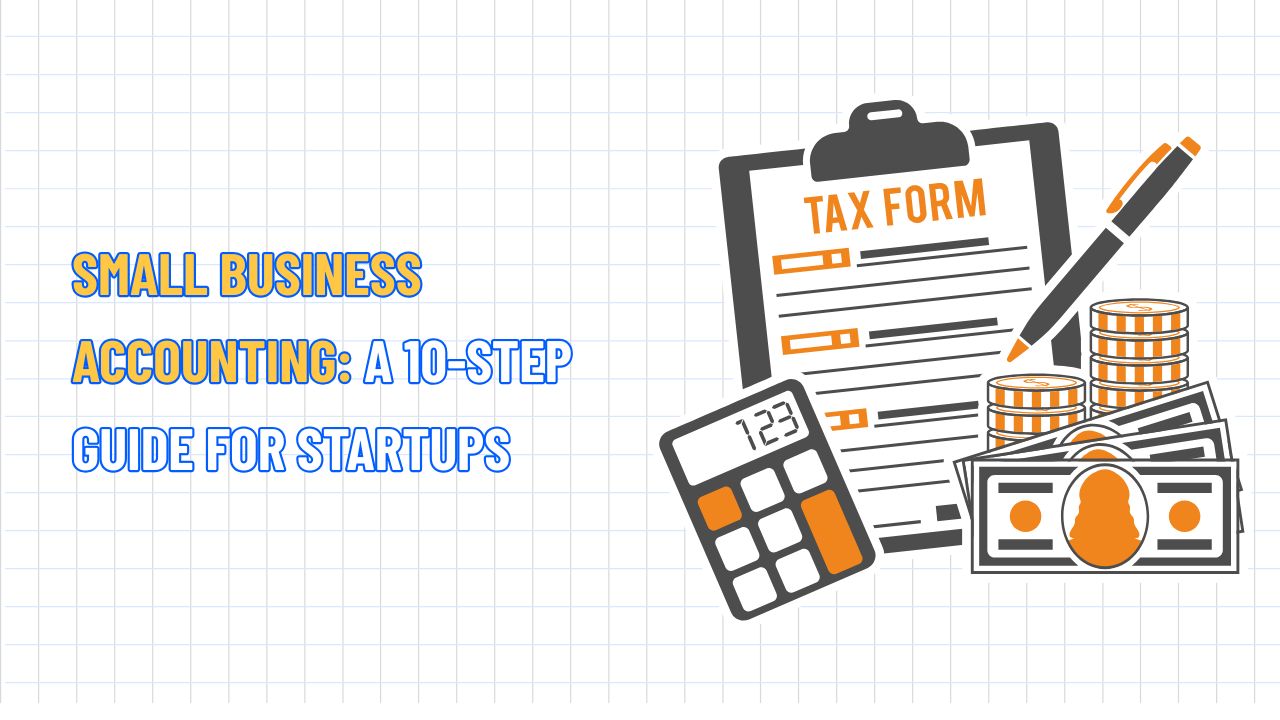Trademarks for Small Business: How to Protect Your Brand Identity
Table of Contents Hide
Starting a business is an inspiring journey, but to succeed in a fiercely competitive market, building and protecting your brand identity is a crucial factor you can't overlook. In this context, understanding trademarks for small business plays an essential role in safeguarding your company’s image and reputation. In the article below, NextSky dives into the concept, importance, and registration process to ensure your company stays safe and professional.

What is a trademark and why is it important for small businesses?
A trademark is a name, symbol, or design that identifies goods, services, and distinguishes them from competitors. For small businesses, a trademark forms the foundation for building trust, establishing a position, and safeguarding identity amid intensifying competition. Check out some standout benefits of registering a trademark for small businesses:
- Exclusive rights: Legally owns your brand name, logo, or slogan, preventing copying or confusion from rivals.
- Legal protection: Allows you to sue if others use similar marks and seek damages.
- Increased recognition: A registered trademark makes it easier for customers to identify, remember, and trust your business.
- Nationwide protection: In the U.S., federal trademarks cover all 50 states, extending beyond local limits.
- Counterfeit prevention: Customs can block imported goods infringing on your trademark.
Real-world example: If you own a café called "Bean Bliss" without trademark registration, a competitor could open "Bean Bliss Café" nearby and confuse customers. With a protected trademark, you have legal rights to defend your name and reputation, preserving customer trust.
Read more: What is A Small Business? A Comprehensive Guide to Definition
How to register a trademarks for small business: Step-by-step guide
Registering a trademark might sound complex, but it's a straightforward process if you follow these steps. Here's how to register a business name or other trademark elements in the U.S.
Step 1: Conduct a thorough trademark search
Before finalizing your name and logo, creating a unique identity is essential. Checking legality and uniqueness early helps you:
- Search the USPTO database: Use the USPTO's Trademark Electronic Search System (TESS) to check existing trademarks.
- Search online: Use Google, Bing, and social media to see if similar names are in use in your industry.
- Check domain availability: Verify if your desired name is available as a domain for your website.
- Consider a professional search: Hiring a trademark search service ($300–$2,000) can uncover international or state-level conflicts you might miss.
Step 2: Choose your filing basis
When registering a trademark with the United States Patent and Trademark Office (USPTO), select one of two bases depending on your brand's development stage:
- Use in commerce: Applies when you've already started using the mark in actual business operations, like selling products, providing services, or running an online store serving customers across states.
- Intent to use: For businesses or startups developing their brand but not yet launching it commercially. This reserves ownership rights before actual use begins.
Step 3: Identify your goods or services
Each trademark ties to specific goods or services, classified by the USPTO into 45 classes to define protection scope. Choosing the right class ensures comprehensive coverage and avoids unnecessary disputes. Here are some common examples you shouldn't overlook:
- Class 9: Software and tech products – e.g., Shopify themes like Glozin.
- Class 35: Business services – e.g., e-commerce consulting.
- Class 42: Technology services – e.g., API integrations or web platform development.
Consult the USPTO's ID Manual to select classes matching your operations. Each class requires a separate fee of $250–$350.
Step 4: Submit your application
The trademark protection journey kicks off by filing an application via the USPTO's Trademark Electronic Application System (TEAS). Depending on your application's readiness, choose the best filing form:
- TEAS Plus ($250 per class): Requires more upfront info but is cheaper.
- TEAS Standard ($350 per class): Offers more flexibility but costs more.
You'll need:
- Your mark, like a name, logo, or slogan.
- A description of your goods or services.
- A specimen of use, such as website screenshots or product packaging.
- Your filing basis (use in commerce or intent to use).
Step 5: Examination and publication
After filing, the USPTO reviews and processes in three main stages. Understanding each helps you stay proactive and shorten completion time:
- Examination stage: A USPTO examiner reviews your application in 3–4 months. You may need to respond to requests for more info or overcome refusals if the mark conflicts with existing ones.
- Publication stage: If it passes examination, the mark publishes in the Official Gazette for 30 days, allowing third parties to oppose if they believe it harms their rights.
- Registration: If no opposition, the USPTO issues a registration certificate, granting legal ownership. The full process typically takes 8–12 months, depending on complexity.
Step 6: Maintain your trademark
A USPTO-registered trademark lasts 10 years, but to keep protection ongoing, businesses must handle periodic requirements:
- Declaration of use: File in years 5–6 and 9–10, with fees of $100–$425 per class.
- Renewal: Every 10 years, $525 per class.
Expert tip: For high-value or complex trademarks, hiring an intellectual property attorney is wise. Though costs range $500–$2,000, it helps avoid legal risks, preserves brand value, and ensures full compliance.
Read more: Top 9+ Best Ecommerce Platforms for Small Businesses
What can and cannot be trademarked?
What can be trademarked
Your small business can register trademarks for elements that distinguish your brand, including:
- Business names: E.g., "Nextsky Solutions" for a tech company.
- Product names or nicknames: E.g., "Glozin" for a Shopify theme.
- Logos and symbols: E.g., a unique chart for your brand.
- Slogans: E.g., "Empower your e-commerce" for a service provider.
- Sounds: E.g., a signature jingle for your brand.
- Colors or color schemes: E.g., Tiffany's signature blue.
- Scents: E.g., the distinctive Play-Doh smell.
What cannot be trademarked
Not everything qualifies for protection. The USPTO rejects:
- Generic terms: E.g., "café" or "e-commerce platform."
- Descriptive phrases: E.g., "fast delivery" or "high-quality theme."
- Marks already in use: If someone else uses a similar name or logo in your industry.
- Common phrases or religious quotes: These lack distinctiveness.
- Immoral or deceptive marks: Anything misleading or offensive.
Trademark vs. patent and copyright: What's the difference?
It's easy to confuse trademarks, patents, and copyrights since they all protect intellectual property, but they serve different purposes:
- Trademark: Protects brand identifiers like names, logos, and slogans used in commerce. E.g., the "Coca-Cola" name is trademarked.
- Patent: Protects inventions, granting exclusive rights to make, use, or sell for a limited time (usually 15–20 years). E.g., a new coffee maker could be patented.
- Copyright: Protects creative works like books, music, or software. E.g., a jingle for your café ad could be copyrighted.
The key difference: Trademarks are protected through commercial use, not just creation. For instance, a logo might be copyrighted as artwork but only trademarked when used to sell goods or services.
Read more: Budgeting for Small Business: A Step-by-Step Guide to Success
Common mistakes to avoid when registering a trademark
Registering a trademark is a vital step to protect your business's intellectual property, but many make basic errors that risk rejection or issues. Here are common pitfalls to dodge:
- Skipping the trademark search: Overlooking existing marks can lead to duplicates, refusals, or lawsuits. A thorough early search saves time and money.
- Choosing overly generic names: Descriptive or common names are hard to register and weakly protectable. Opt for unique, memorable names reflecting your distinct identity.
- Forgetting to maintain registration: Many businesses get certified but miss renewal deadlines, leading to cancellation. Tracking and upkeep ensure long-term ownership.
- Misunderstanding automatic protection: Copyrighting a logo or name doesn't mean it's trademarked. Full legal protection requires filing and commercial use.
- Ignoring international protection: If expanding abroad, consider the Madrid Protocol for multi-country registration, faster and more cost-effective.
Read more: Top 5 Best Shipping Options for Small Businesses to Save Big
Registering your business name, logo, or slogan is a critical step for small businesses aiming to protect their brand and achieve long-term success. Investing in trademarks for small business not only safeguards your identity but also builds long-term trust. With NextSky's insights above, your brand can stand out for years to come.










